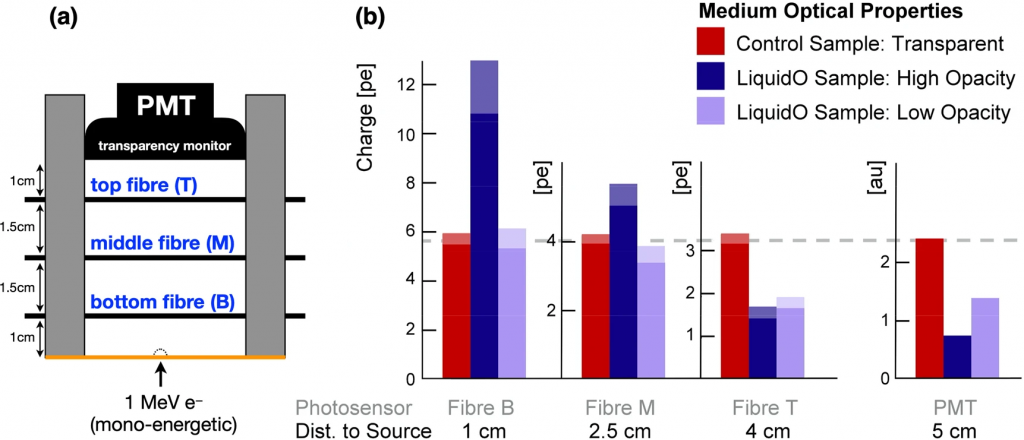The MICRO-LiquidO prototype (or micro) was the first LiquidO detector to address the experimental demonstration of the detection principle of LiquidO; i.e. its stochastic light confinement. The micro main results and experimental setup are illustrated below, as published in our Nature’s Communication Physics 4 273 2021. The micro relied on the NoWaSH opaque scintillator whose ability to become opaque (and solid) upon cooling down, up to order 5ºC , enable a data-driven comparison within the same detector against a transparent (liquid) configuration from ≥20ºC. The optical readout consisted of only 3 fibres and a 3″ PMT so that traditional (PMT) light readout can be simultaneously compared against the novel LiquidO under scrutiny by the micro. Further details can be found in the publication.

The micro detector was built in late 2017 as the simplest “test bench” for the readout. Regular data taking started in 2018, upon some commissioning period. The first data analysis of the micro quickly exhibited remarkable results. While the micro was not originally expected to be the demonstrator of LiquidO its excellent results did so. This effectively demonstrated how surprisingly simple the LiquidO experimental articulation may be. Indeed, an almost immediate positive result was obtained by the summer of 2018. This is now understood to be caused by the excellent match between the small dimensions of the detector (order 5cm across) and the small scattering mean-free path of the NoWaSH scintillator used. The NoWaSH scintillator was also then tested for the first time while being fully characterised over the same time period in the laboratory so that the obtained results could be fully understood and corroborated. Upon the first outcome, much more data, analysis and consortium discussion followed to ensure the quality and the robustness of the meaning of the findings. Indeed, this experimental phase was a key element for the official LiqiudO public release and first publication between 2018-2019. The micro detector is now decommissioned and its programme is concluded, as superseded by the MINI(e)-LiquidO prototype, i.e. the next step up in detector prototyping.
Originally, the LiquidO main demonstration was envisioned to be done by the more complex and complete MINI(e)-LiquidO prototype, being designed and constructed at the same time. However, the aforementioned remarkable results led the consortium to devote all its effort and main focus on the micro results as they indeed led to the first unambiguous experimental demonstration of the LiquidO technology; or TRL ≥3.
